If You Build It, They Will Come
Story and photos
by Kathleen Walls

In 1933, President Franklin Roosevelt
faced with the worst depression in American history needed
to kick start the economy. Part of his New Deal was an
organization designed to employ young men. He called it the
Civilian Conservation Corps (CCC) and it did much more than
give millions of young men jobs on environmental projects.
As travelers, we owe a lot to an organization that has been
somewhat forgotten over the years. The CCC helped to build
711 new state parks across the country and two national
parks were built almost entirely by CCC labor: The Great
Smoky Mountains National Park straddling the border of
North
Carolina and
Tennessee, and the Big Bend National Park in
Texas. The CCC earned the nickname,
"Roosevelt's Tree Army."
These parks continue to provide a natural attraction and
much of the buildings these young men built are still in use
at parks across the country today.
I've visited many of these parks and
want to thank these passionate young men who although not
skilled carpenters and without the tools we have today built
parks that have far outlasted the average chain restaurant
buildings that seem to need to be torn down and rebuilt
every ten or so years. Makes me wonder when pride in work
was replaced with the "hurry up and throw it up as cheaply
as possible to earn the most money" standard we see now.
Great Smoky Mountains National Park
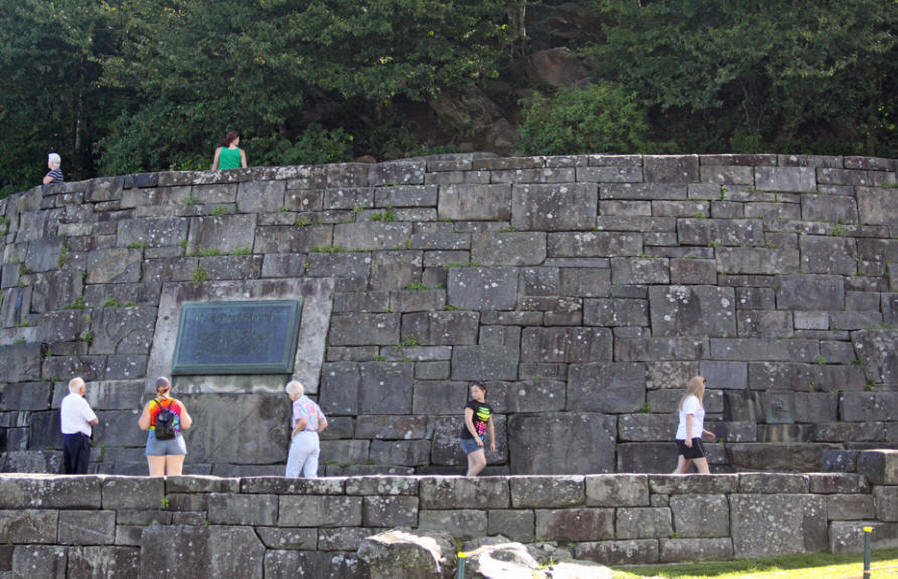
This is my all-time favorite national
park. I've visited it many times, sometimes from Townsend,
and often from Pigeon Forge or Gatlinburg. In 1940, when
President Franklin D. Roosevelt dedicated the
Great Smoky
Mountains National Park, he did it at one of the CCC
works, the two-tiered stone Rockefeller Monument at Newfound
Gap on Blue Ridge Parkway. The CCC built the stone guard rails and bridges you
drive today throughout the park. They built fish rearing
ponds for a trout hatchery near Chimneys Picnic Area and so
much more.
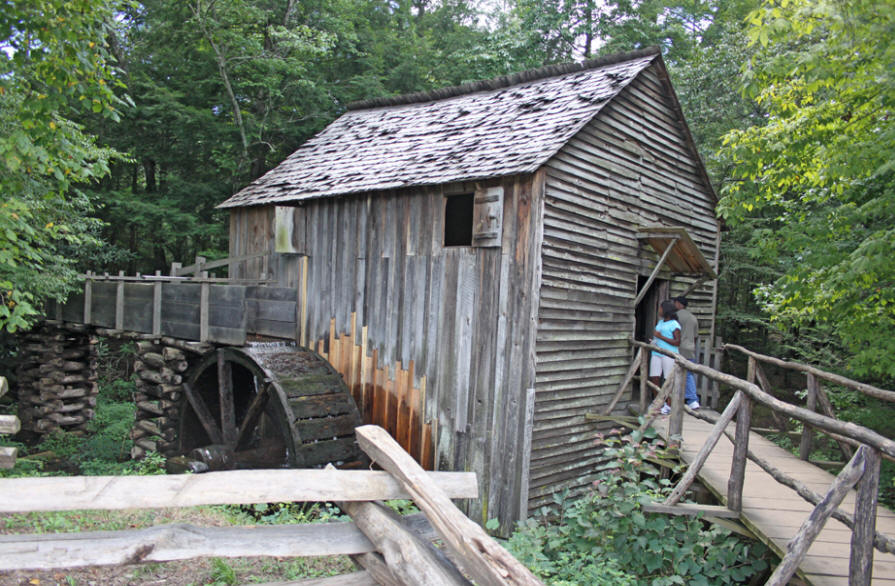
One of my favorite places in this park
is Cades Cove. It was built by early settlers and tells the
story of these rugged folks that made a home in these
mountains long ago. The CCC did work on the historic
buildings and their work makes it possible for us to drive
good roads and visit this treasure. There's a marker
honoring the CCC along
Cades Cove
Loop Road near the
Missionary Baptist Church. In part it reads "If you seek
their monument, look about you."
For more about Blue Ridge National Parkway which leads
into Great Smoky Mountains National Park,
My friend and fellow travel writer, Jo
Clark, says her favorite National Park is the Blue Ridge
Parkway. When people take a road trip on the Blue
Ridge Parkway, most probably never realize that it is a
part of the National Park Service. It is known as America’s
Favorite Drive for good reason: the road wraps through
469 miles of the Blue Ridge Mountains in the Appalachian
Mountain chain. Starting at the Shenandoah National Park in
Virginia, the drive ends at the Great Smoky Mountains
National Park in North Carolina. Below is one of her photos
of Lovers Leap on the Blue Ridge Parkway.
Read more about the
Blue Ridge Parkway and the secrets it hides in this article
by Jo: The Stunning
469-Mile Blue Ridge Parkway is America's Favorite Drive.

Big Bend National Park
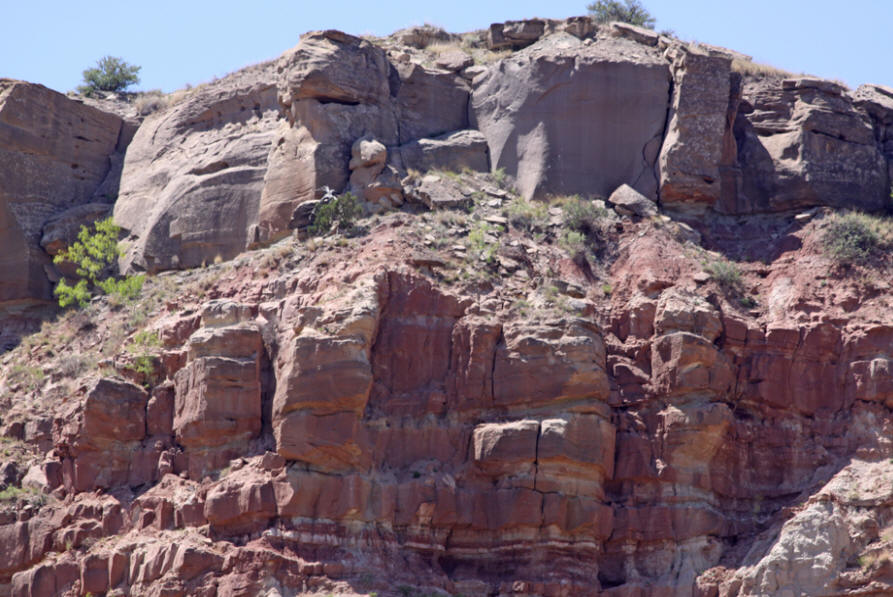
For those not familiar with it,
Big Bend is
in the far corner of West Texas, where the Rio Grande turns.
According to Barry Scobee, who wrote about it on December
27, 1935 in Alpine Avalanche, the local newspaper in
Alpine, Texas, it is "The most representative example of the
Chihuahuan Desert ecosystem in the United States."
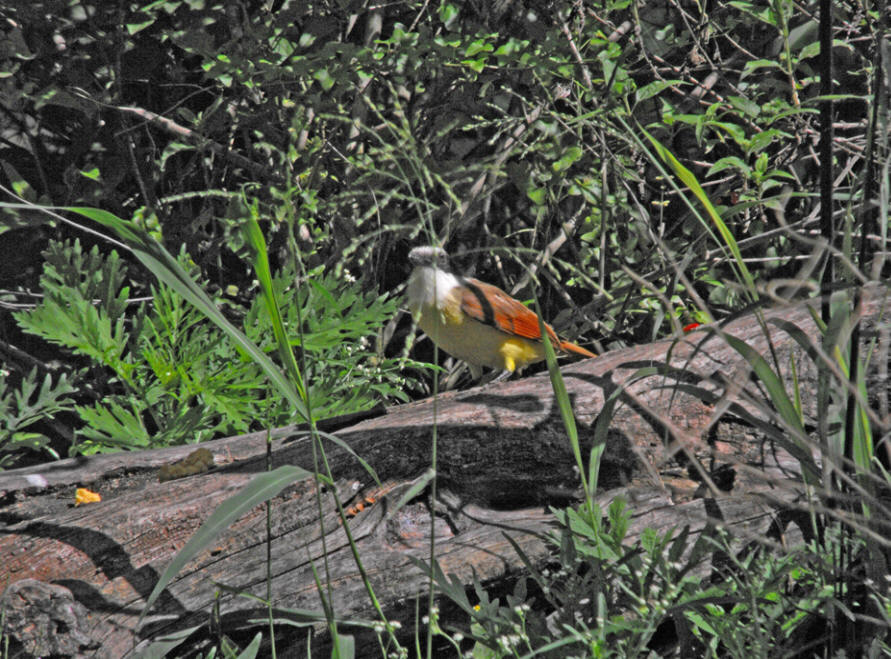
I've visited the park briefly from
McAllen, a fantastic small town perched on the US/Mexico
border. In 1934, Big Bend was in name a state park, but it
was mostly virgin land that was accessed by a four-hour
drive up a dirt road. Today, thanks to the CCC, it's not
only a National Park, but a UNESCO Biosphere Reserve and a
Globally Important Bird Area. The over 450 bird species that
are found there draw birders from all over. Even I spotted
what I was told was a Great Kiskadee.
Today, the CCC projects still are in
the park, including the Green Gulch Road, Chisos Mountain
Road, Lost Mine Trail, several other trails, buildings, and
their water system. They built four stone and adobe cottages
which are still in use.

Mike Roess Gold Head Branch State
Park
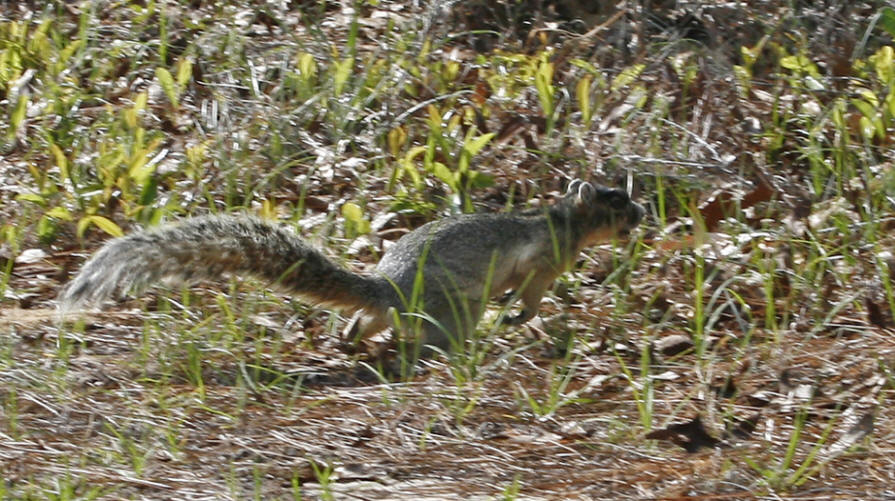
The CCC park closest to me here in Clay
County, Florida, is
Mike Roess Gold Head Branch State Park. It's one of
Florida's first state parks, built by the CCC in the 1930s
on a 2,000-acre site. What was once a narrow-gauge railroad
owned by Dowling and Burlington transporting logs between
Green Cove Springs and Melrose is a tram trail where you
might spot anything from rare Sherman's fox squirrels,
gopher tortoises, foxes, various snakes, and birds including
red-cockaded woodpeckers, hawks, songbirds, and even bald
eagles.
If you really want to get your heart
pumping, hike down the long staircase leading you to one of
Florida's few ravines. Or take the Ridge Trail to the old
mill site. Stop by the CCC buildings: water tower, cabins,
and old bathhouse (still in use) by Little Lake Johnson
Beach.
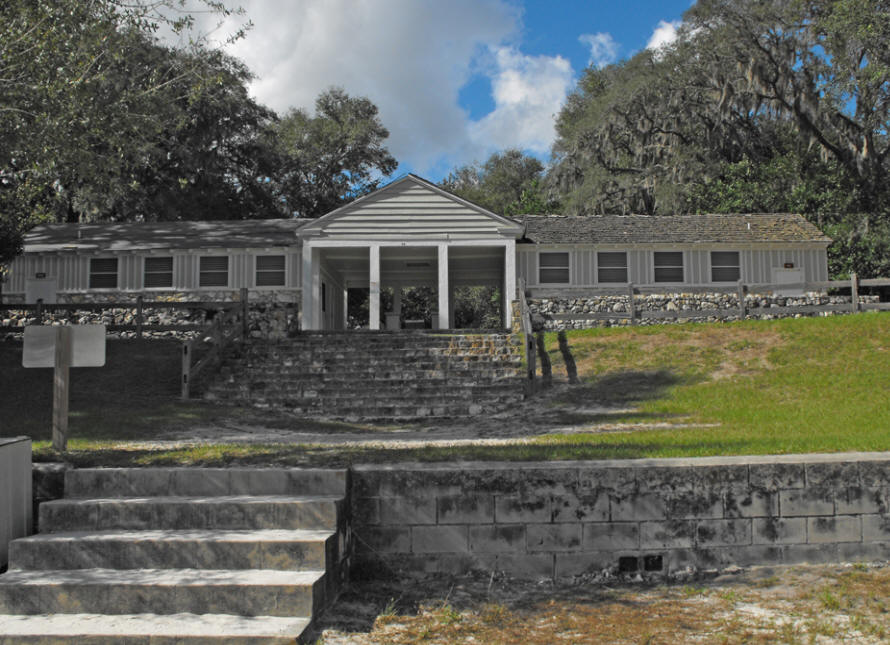
The CCC cabins are near the lake and
charming. The campground accommodates everything from big
RVs needing full hookups to primitive camping. It's a less
crowded park that is less than an hour's drive from either
St. Augustine or
Jacksonville.
Wall Doxey State Park
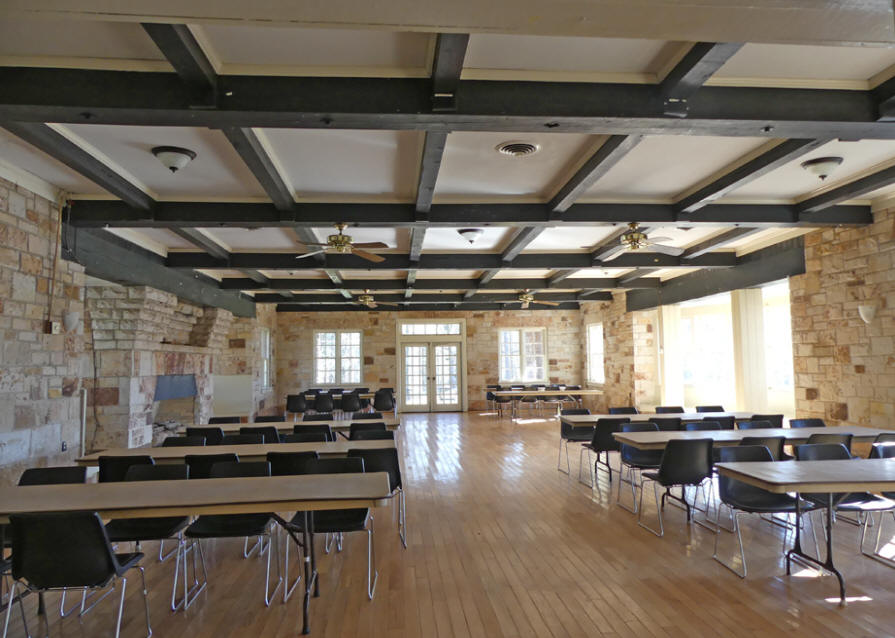
Wall Doxey State Park in Mississippi was my camping spot
of choice a few months ago when I visited
Little Rock and
later
Memphis. It was the eighth park in Mississippi created
by the CCC. The CCC began working on it on June 25, 1935,
and opened it to the public in 1938. The park was then named
Spring Lake State Park, but was renamed in 1956 after US
Congressman Wall Doxey. A helpful employee showed me the
lovely CCC built lodge and told me a bit of the park's
history.
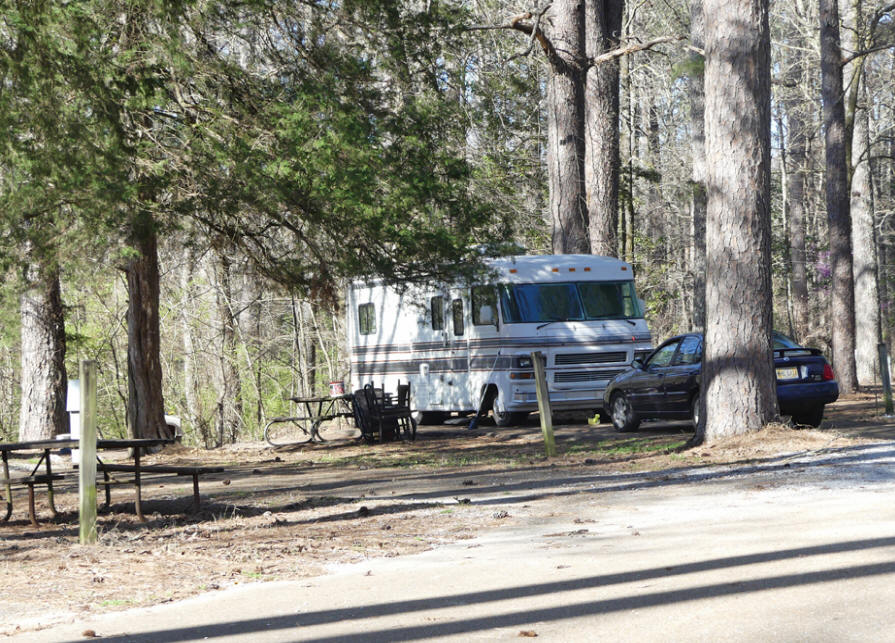
The camping sites are well spaced, have
hookups and spotless restrooms. There are picnic tables, a
picnic pavilion, a playground, and a disc golf course.
There's a 60-acre, spring-fed lake and four of the original
CCC cabins.
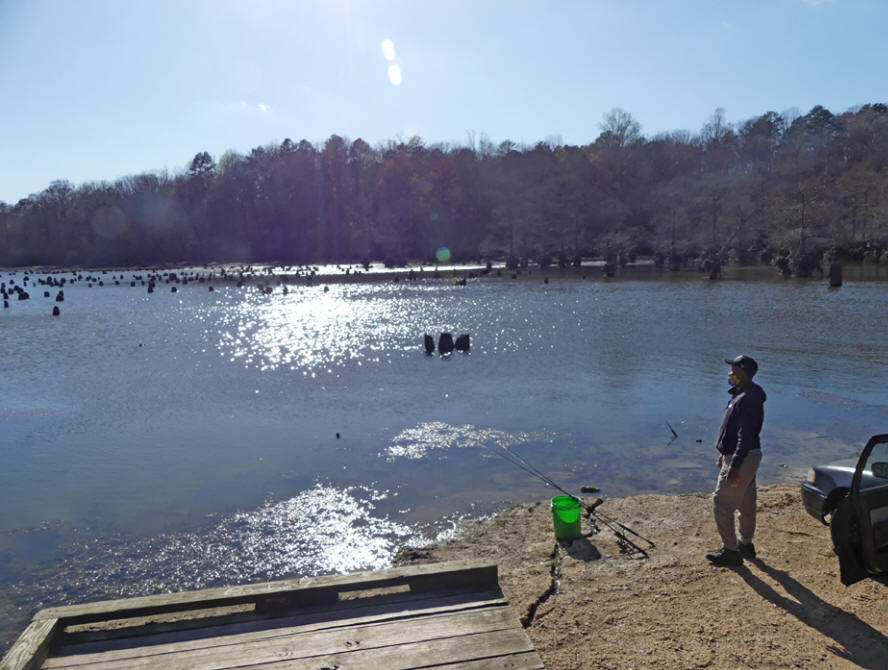
Wall Doxey is just seven miles from
Holly Springs, Mississippi which is filled with historic
antebellum homes.

Torreya State Park
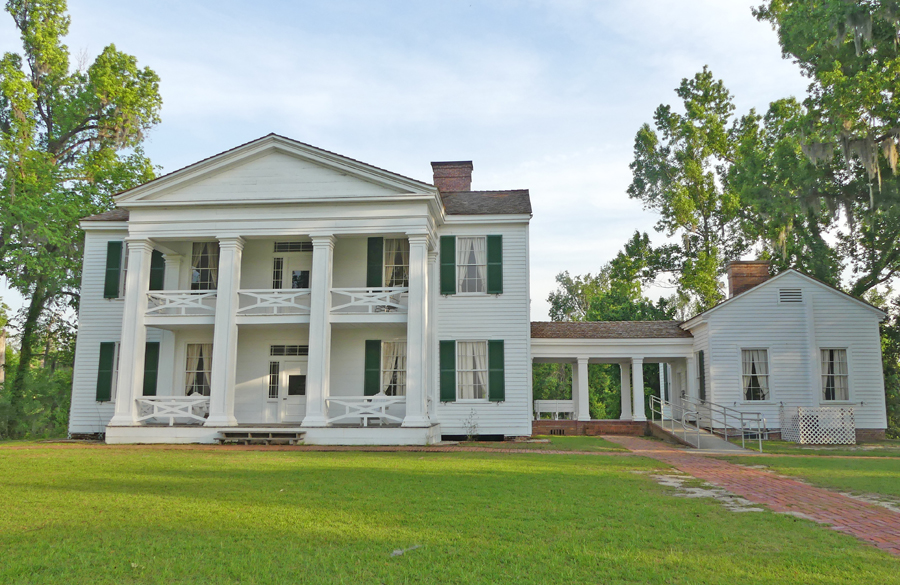
At
Torreya State Park, in Bristol,
Florida, one of the
CCC's greatest feats was moving the Gregory House, an
antebellum plantation house, into the park. They dismantled
the magnificent home built across the Apalachicola River and
relocated and reconstructed it in the park on the high
bluff. It's furnished as it might have been in the 1840s
when it was the plantation home of Jason Gregory and his
family.
I walked behind the house to a rather
rugged trail here leading to a Civil War site, Hammock
Landing Battery, where Confederated places some cannon to
protect the Apalachicola River.
The park is named for the rare Torreya
Tree, which only grows in this area. There are a few near
the Gregory House.
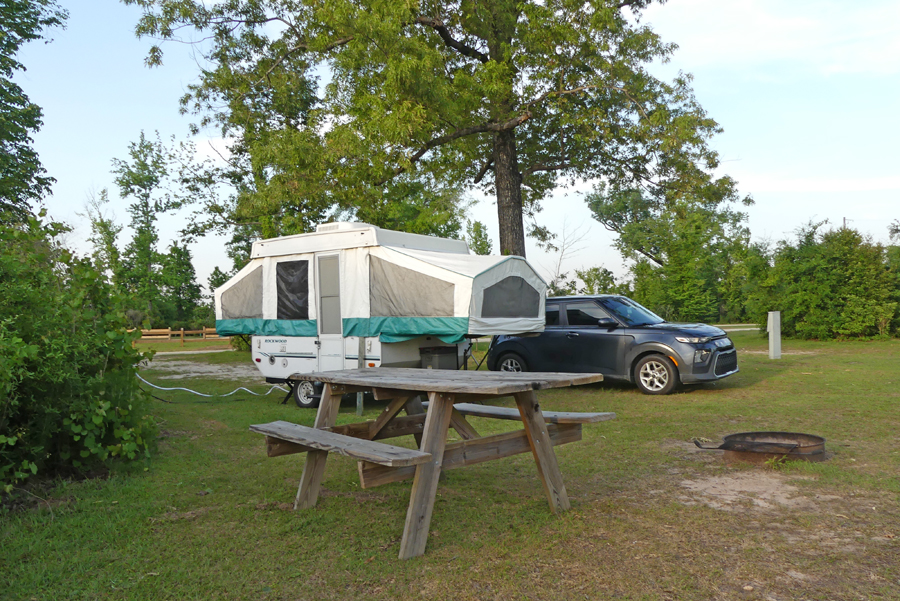
I camped there several months ago in a
spacious spot with a beautiful overlook of the woods and
river. The site had electric, water, a picnic table, grill,
and fire ring. Best of all, I was just next door to the
restroom. It was clean and had hot showers. If you want more
conveniences, the park has a cracker cabin or a yurt.
O'Leno State Park
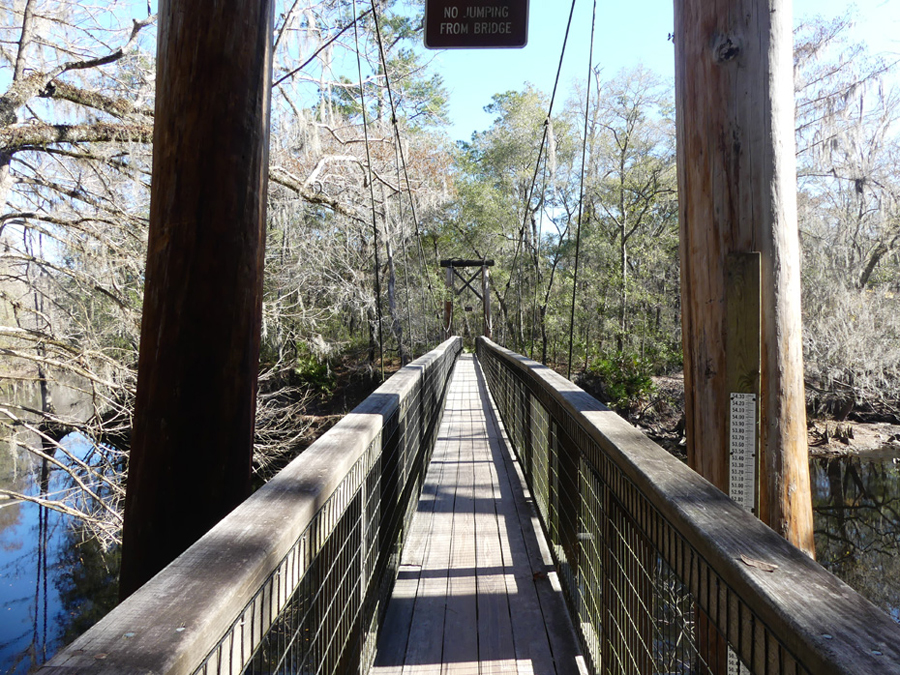
O'Leno State Park in Columbia County, Florida near Lake
City, home to the historic
Blanche Hotel. It's one of
Florida's very first state parks, begun in 1935, at what was
the site of the mid-1800's town of Keno. The CCC has
preserved much of the old town. There are remnants of the
town's grist mill, the recreation hall, and some old log
buildings. One of their amazing feats is O'Leno's suspension
bridge across the Santa Fe River. (At this time, it is
temporarily closed to walking.) You can swim or launch a
kayak in the river.
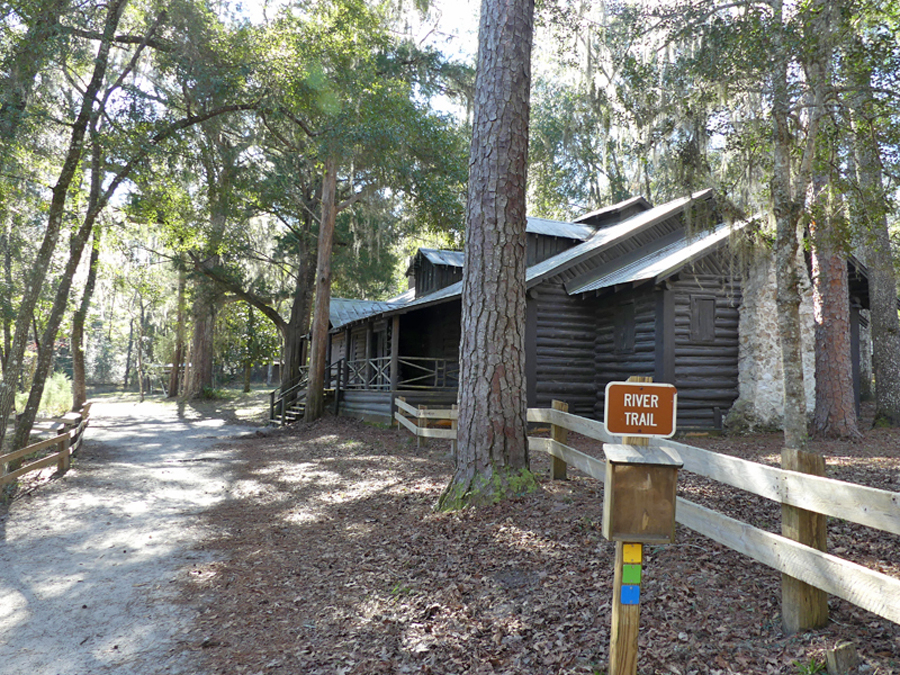
The Santa Fe River is a geological
wonder. Follow the 1.5-mile River Trail to the River Sink.
This is where the entire Santa Fe River descends int the
earth and flows underground for 3 miles before resurfacing
at neighboring River Rise Preserve State Park.
You don't want to miss their Nature
Center explaining the abundant wildlife found in the park.
In front, there are two pens where a family of turtles live.
There are two campgrounds. Dogwood
Campground is the first you pass on entering, but Magnolia
Campground is closest to the river and the CCC buildings,
plus, it has the most level sites.
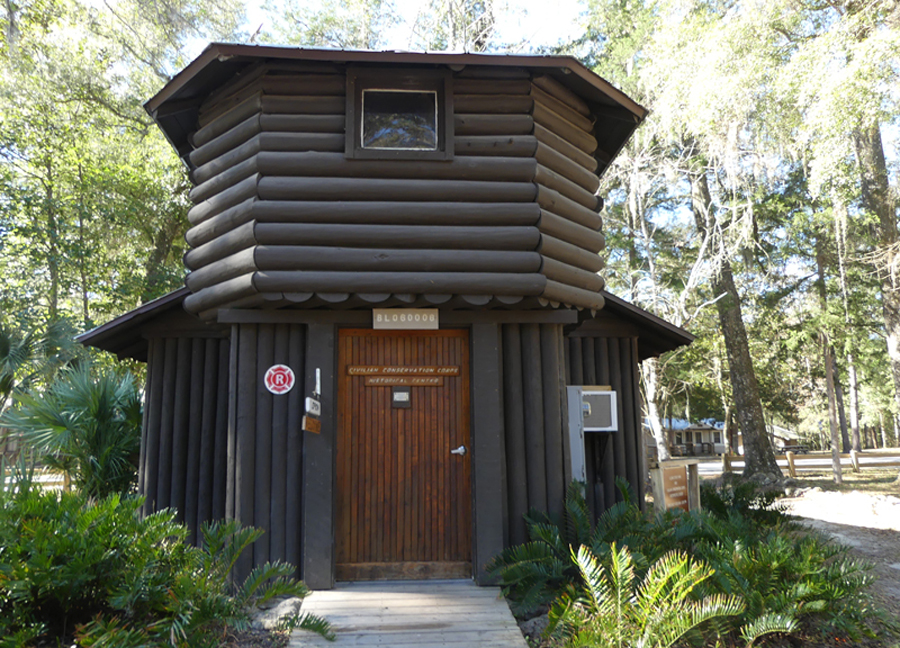
With the work the CCC did here, it's
only fitting that there's a statue and museum about them.
Highlands Hammock State Park

Highlands Hammock State Park is the first of eight
original parks built by the CCC in Florida. It has a CCC
Museum and statue. They have an annual Civilian Conservation
Corps Festival each Feb. Many of the trails, pavilions,
bathhouses, and other structures the CCC built are still in
use.

Wildlife florishes here. You may even see the rare
Florida Scrub Jay.
Vogel State Park
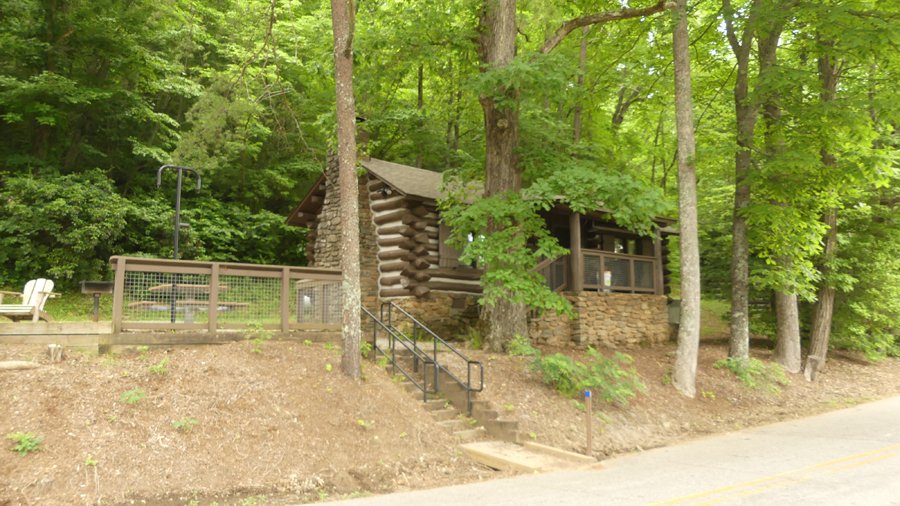
Vogel State Park
in Blairsville is the second oldest state park in Georgia.
The CCC built the park's infrastructure in 1933. The park
has sites for campers ranging from tents to large RVs. some
of Vogel cabins are the original ones built by the CCC. They
built a dam on Wolf Creek to creating the 22-acre Lake
Trahlyta. It's a popular place for swimming, fishing,
canoeing, and kayaking. The park has a small amphitheater by
the lake for concerts. There is a small CCC museum in the
park.
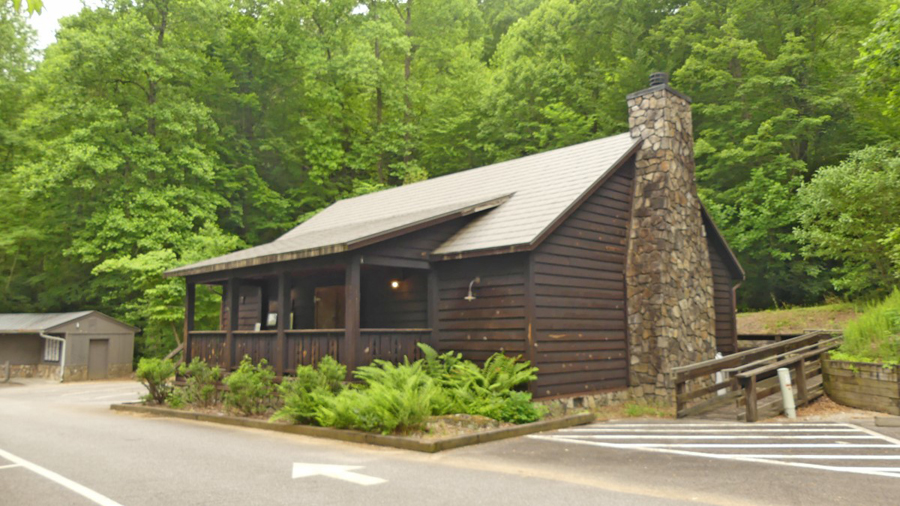
What is now Lake Trahlyta was the site
of Georgia's most renowned poet, Byron Herbert Reece's,
birthplace.

Vogel Park sits at the base of Blood
Mountain,
Georgia's second highest peak. The Appalachian
Trail crosses the mountain at a place called Mountain
Crossings at Neel Gap Mountain Crossings, now an
outfitter/gift shop and hostel, was rebuilt in the 1930s
from an old logging structure as an inn and dining hall for
workers building Vogel State Park. By the 1980s, the
building was on the verge of demolition. Instead of tearing
it down, the owners renovated it as Mountain Crossings, also
called Walasi-Yi Interpretive Center. It's a stop for hikers
on the Appalachian Trail. This is the only place where the
trail crosses through the building. A tradition is for
hikers who have completed the trail return and throw their
hiking boots over a tree out front.
Blairsville is less than a two-hour
drive from
Atlanta.
FD Roosevelt State Park
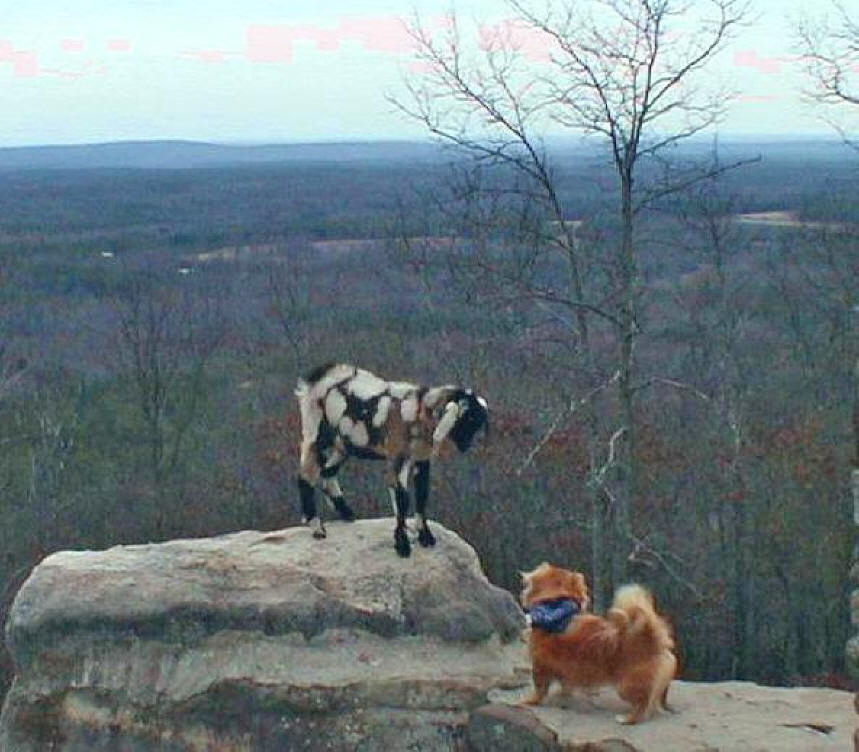
Pine Mountain, Georgia is home to
F. D.
Roosevelt State Park, recognizing that this area was
President Roosevelt's favorite retreat. Without President
Roosevelt, the CCC and these parks would not exist, so it's
only fitting that there should be a state park honoring him.
It's Georgia's largest state park with
over 40 miles of trails, including the popular 23-mile Pine
Mountain Trail. The CCC built the cottages and the Liberty
Bell swimming pool fed by cool springs. I camped there
many years ago when my little dog was alive. He found a
friendly goat to play with.
Little White House State Historic
Site
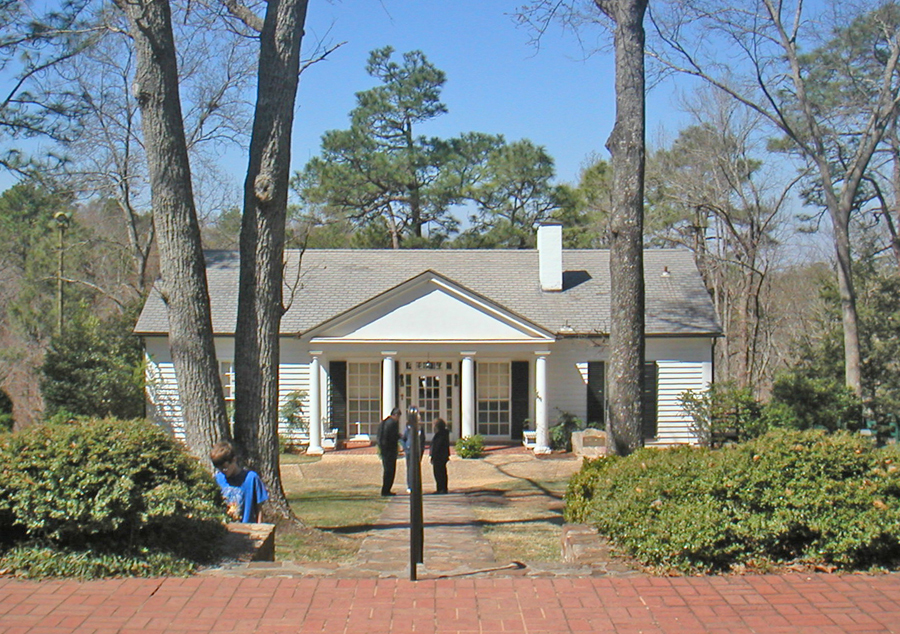
Before the CCC and Roosevelt's
presidency, he came to the nearby town of Warm Springs for
relief from suffering from pain caused by polio, which had
crippled him. He came to swim in the healing waters of the
warm springs. He built a modest cottage as a getaway form
political pressure when he was governor of Georgia in 1924.
Today, Roosevelt's
Little
White House State Historic Site invites visitors to see
his home, a museum and the pools that first drew him here.
The museum showcases polio treatments and iron lungs.
These and so many other places we visit
for recreation and relaxation, we owe to these young men of
CCC. Go visit these and check out more on your own.
Public Disclosure
Please Read
FTC has a law
requiring web sites to let their readers know if any of the
stories are "sponsored" or compensated. We also are to
let readers know if any of our links are ads. Most are not.
They are just a way to direct you to more information
about the article where the link is placed. We have several ads
on our pages. They are clearly marked as ads. I think
readers are smart enough to know an ad when they see one but to
obey the letter of the law, I am putting this statement here to
make sure everyone understands. American Roads and Global
Highways may contain affiliate links or ads. Further, as their
bios show, most of the feature writers are professional travel
writers. As such we are frequently invited on press trips, also
called fam trips. On these trips most of our lodging, dining,
admissions fees and often plane fare are covered by the city or
firm hosting the trip. It is an opportunity to visit places we
might not otherwise be able to visit. However, no one tells us
what to write about those places. All opinions are 100% those
of the author of that feature column.



